#Britannia III
Text
DVD review: “Britannia III” (2019)

View On WordPress
#Britannia#Britannia III#Britannia III dvd#Britannia III dvd review#David morrissey#dvd#dvd review#dvd televisin#dvd television#Eleanor Worthington Cox#Kelly Reilly#Mackenzie crook#Nikolaj Lie Kaas#Zoë Wanamaker
0 notes
Text

9 August 1976
Stewart of Glasgow: Yesterday Queen Elizabeth II and Prince Philip got away from it all for their holidays. Cheered by a crowd of 3000, they boarded the royal yacht at Greenock for a cruise to the solitude of the Western Isles. But first, the Queen chatted to the crowd - and spoke in French to a group of youngsters on holiday from Normandy. The royal party berth at Aberdeen over the weekend and then go on to Balmoral for the rest of the holiday. With the Queen and Prince Philip were Prince Charles, Princess Anne, Prince Andrew and Prince Edward.
#queen elizabeth ii#prince philip#duke of edinburgh#princess anne#princess royal#king charles iii#prince edward earl of wessex#prince andrew#britannia
36 notes
·
View notes
Photo

Celebrating the coronation of King Charles III and Queen Camilla! God save the King!
Photo: Holyrood Palace, Edinburgh, Scotland
#scotland#edinburgh#royal palace#uk#united kingdom#holyrood palace#british royals#great britain#british isles#palace#celtic europe#britannia#alba#europe#european history#scottish history#british history#castle#king charles iii#royal family#spring#travel#tourism#explore#adventure#european travel#european vacation
6 notes
·
View notes
Text
I really love the moongates system from Ultima III and Ultima IV, it's probably my favorite diegetic fast travel system from any videogame.
The way it works is the world the game is set in has two moons, Trammel and Felucca, the phase of which is displayed at all moments on top of your UI. There are eight specific locations in the game world, each associated with a specific moon phase. A moongate (displayed as a blue portal) will appear in the location corresponding with the current phase of the left moon (Trammel), and if you step into it it will teleport you to the location corresponding with the current phase of the right moon (Felucca).

Ultima IV in particular sets up the start of the game so that you'll almost certainly see the Britannia moongate pop up a few moments after starting playing, and then you may either enter it (like I did), leaving you lost somewhere else with no reference for where the hell you are now, or not enter it and see it disappear again a few moemnts later, leaving you perplexed about what the hell was that.
At first it's mysterious and confusing how these blue portals that keep randomly popping up work (I was *extremely* confused the second time I stepped into the Britannia moongate and it took me to a completely different place from the first time), but one you figure out their mechanics and get a feel for how they work they become an extremely convenient way to travel around. It kidna becomes second nature like learning to ride your city's public transit system and I love games that give me that sense of organic discovery and mastery.
I don't have a larger point I'm trying to make here I'm just highlighting something I really like that rarely gets discussed about one of the most influential videogames of all time for no reason in particular.
279 notes
·
View notes
Text
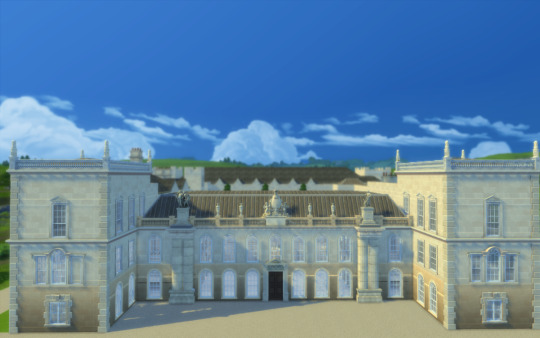

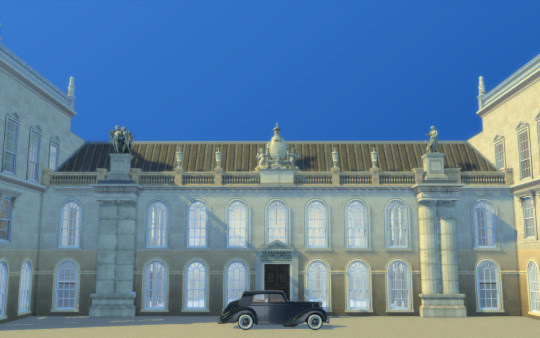



Grimsthorpe Castle
Hi guys!!
I'm sharing another grand english state!
House History: The building was originally a small castle on the crest of a ridge on the road inland from the Lincolnshire fen edge towards the Great North Road. It is said to have been begun by Gilbert de Gant, Earl of Lincoln in the early 13th century. However, he was the first and last in this creation of the Earldom of Lincoln and he died in 1156. Gilbert's heyday was the peak time of castle building in England, during the Anarchy. It is quite possible that the castle was built around 1140. However, the tower at the south-east corner of the present building is usually said to have been part of the original castle and it is known as King John's Tower. The naming of King John's tower seems to have led to a misattribution of the castle's origin to his time.
Gilbert de Gant spent much of his life in the power of the Earl of Chester and Grimsthorpe is likely to have fallen into his hands in 1156 when Gilbert died, though the title 'Earl of Lincoln' reverted to the crown. In the next creation of the earldom, in 1217, it was Ranulph de Blondeville, 4th Earl of Chester (1172–1232) who was ennobled with it. It seems that the title, if not the property was in the hands of King John during his reign; hence perhaps, the name of the tower.
During the last years of the Plantagenet kings of England, it was in the hands of Lord Lovell. He was a prominent supporter of Richard III. After Henry VII came to the throne, Lovell supported a rebellion to restore the earlier royal dynasty. The rebellion failed and Lovell's property was taken confiscated and given to a supporter of the Tudor Dynasty.[2]
The Tudor period
This grant by Henry VIII, Henry Tudor's son, to the 11th Baron Willoughby de Eresby was made in 1516, together with the hand in marriage of Maria de Salinas, a Spanish lady-in-waiting to Queen Catherine of Aragon. Their daughter Katherine inherited the title and estate on the death of her father in 1526, when she was aged just seven. In 1533, she became the fourth wife of Charles Brandon, 1st Duke of Suffolk, a close ally of Henry VIII. In 1539, Henry VIII granted Charles Suffolk the lands of the nearby suppressed Vaudey Abbey, founded in 1147, and he used its stone as building material for his new house. Suffolk set about extending and rebuilding his wife's house, and in only eighteen months it was ready for a visit in 1541 by King Henry, on his way to York to meet his nephew, James V of Scotland. In 1551, James's widow Mary of Guise also stayed at Grimsthorpe. The house stands on glacial till and it seems that the additions were hastily constructed. Substantial repairs were required later owing to the poor state of the foundations, but much of this Tudor house can still be seen today.
During Mary's reign the castle's owners, Katherine Brandon, Duchess of Suffolk (née Willoughby) and her second husband, Richard Bertie, were forced to leave it owing to their Anglican views. On Elizabeth's succeeding to the throne, they returned with their daughter, Susan, later Countess of Kent and their new son Peregrine, later the 13th Baron. He became a soldier and spent much of his time away from Grimsthorpe.
The Vanbrugh building
By 1707, when Grimsthorpe was illustrated in Britannia Illustrata, the 15th Baron Willoughby de Eresby and 3rd Earl Lindsey had rebuilt the north front of Grimsthorpe in the classical style. However, in 1715, Robert Bertie, the 16th Baron Willoughby de Eresby, employed Sir John Vanbrugh to design a Baroque front to the house to celebrate his ennoblement as the first Duke of Ancaster and Kesteven. It is Vanbrugh's last masterpiece. He also prepared designs for the reconstruction of the other three ranges of the house, but they were not carried out. His proposed elevation for the south front was in the Palladian style, which was just coming into fashion, and is quite different from all of his built designs.
The North Front of Grimsthorpe as rebuilt by Vanbrugh, drawn in 1819. Vanbrugh's Stone Hall occupies the space between the columns on both floors.
Inside, the Vanbrugh hall is monumental with stone arcades all around at two levels. Arcaded screens at each end of the hall separate the hall from staircases, much like those at Audley End House and Castle Howard. The staircase is behind the hall screen and leads to the staterooms on the first floor. The State Dining Room occupies Vanbrugh's north-east tower, with its painted ceiling lit by a Venetian window. It contains the throne used by George IV at his Coronation Banquet, and a Regency giltwood throne and footstool used by Queen Victoria in the old House of Lords. There is also a walnut and parcel gilt chair and footstool made for the use of George III at Westminster. The King James and State Drawing Rooms have been redecorated over the centuries, and contain portraits by Reynolds and Van Dyck, European furniture, and yellow Soho Tapestries woven by Joshua Morris around 1730. The South Corridor contains thrones used by Prince Albert and Edward VII, as well as the desk on which Queen Victoria signed her coronation oath. A series of rooms follows in the Tudor east range, with recessed oriel windows and ornate ceilings. The Chinese drawing room has a splendidly rich ceiling and an 18th-century fan-vaulted oriel window. The walls are hung with Chinese wallpaper depicting birds amidst bamboo. The chapel is magnificent with superb 17th-century plasterwork.
More history: https://en.wikipedia.org/wiki/Grimsthorpe_Castle
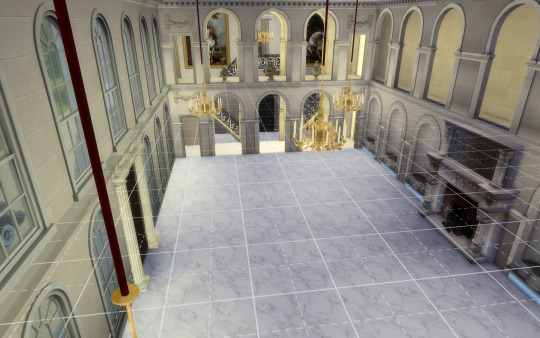



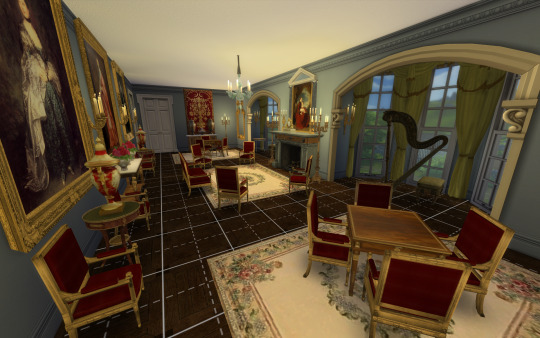

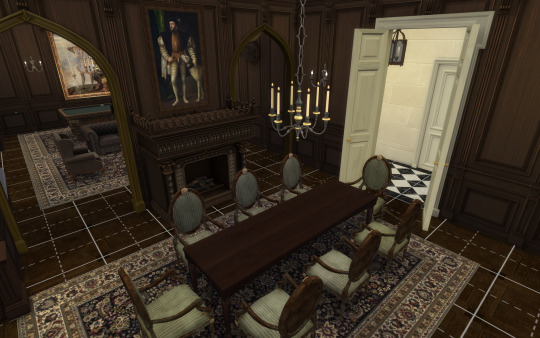



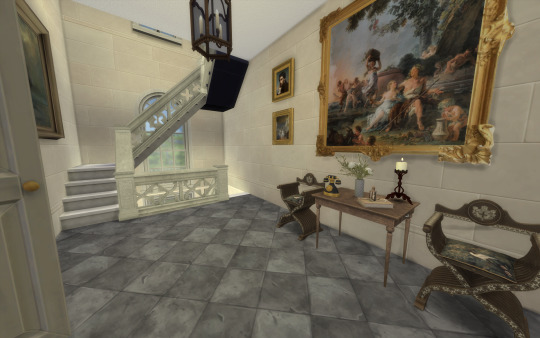
This house fits a 64x64 lot and features several impressive rooms, more than 29 bedrooms, a servants hall and several state rooms!
I only decored some of the main rooms, for you to have a glimpse of the distribution. The rest is up to you, as I have stated that I do not like interiors :P
Be warned: I did not have the floor plan for the tudor rooms, thus, the distribution is based on my own decision and can not fit the real house :P.
You will need the usual CC I use: all of Felixandre, The Jim, SYB, Anachrosims, Regal Sims, TGS, The Golden Sanctuary, Dndr recolors, etc.
Please enjoy, comment if you like it and share pictures with me if you use my creations!











DOWNLOAD (Early acces: June 30) https://www.patreon.com/posts/grimsthorpe-101891128
#sims 4 architecture#sims 4 build#sims4#sims4play#sims 4 screenshots#sims 4 historical#sims4building#sims4palace#sims 4 royalty#ts4 download#ts4#ts4 gameplay#ts4 simblr#ts4cc#ts4 legacy#sims 4 gameplay#sims 4 legacy#sims 4 cc#thesims4#sims 4#the sims 4#sims 4 aesthetic#ts4 cc#english manor
41 notes
·
View notes
Note
First of all, I just want to say how much I love your takes on this blog! your headcanons are really good and I appreciate you giving characters the more complicated parts, since a lot of people don't really do that. But you still manage to make the nordics feel lovable! Also your art is so beautiful!
But I also have a question, and I figured maybe you could help me. I'm in the process of creating an AU where Ancient Scandinavia is Denmark, Norway, Iceland, and Sweden's dad. I also have Ancient Britannia for the UK brothers, Rome for the Italy brothers, etc! But I'm struggling with who I should make Finland's father. Sorry if this is a hard question, but since you seem to know history, I thought maybe you'd have an answer. Thank you!
Hi, anon!! I wish nothing but the best with your AU; I think it sounds exciting! And I'm more than happy to help <3 I know the pain of not having clear or helpful sources when it comes to trying to do some research. You're working with a very specific topic, after all. As much as I'm eager to help here, I also have to immediately admit that I don't have a clear answer for you either. But I can try to explain why that is, so you can come up with a solution yourself!
Right off the bat, I don't know how the rules and headcanons apply in your world-building, but I'm making a guess that you work with similar "Ancients" that other people in this fandom have. I know making "Scandinavia" into a personification, and thus the Nordics' parental figure, is somewhat of a popular headcanon! So you're probably looking for some pre-Christian Finnic area as Finland's parental figure?
The first immediate problem is that we simply don't have the sources to tell us about pre-Christian "Finland." There are no written records by the Finns themselves, not even later chronicles or sagas you might be familiar with in Norse history. There are no detailed stories about Finns by the early Christians either since there wasn't consistent contact until the 13th century or so. All we know comes from assumptions based on the surrounding people's history, some archaeological findings, and the few mentions of "Finns" in runestones or Norse/Novgordian sagas
We're also working with language limitations. The few sources that even mention "Finn," "Fenni," or "Finne" are ambiguous because the term itself could have referred to a Sámi, Finnish, or any kind of Finnic person!
The first mention of "Fenni" comes from the Roman historian Tacitus in 98 A.D. in his book Germania, and this is what he has to say. Some historians think he's describing the ancestors of the Sámi people, but regardless of the specific people group described here, it can be assumed that this was the general way of living for the remote Northern European tribes in the first century - or at least how outsiders viewed these people's way of living
The first document in which the term "Finns" refers specifically to Finnish people may be Pope Alexander III's papal bull "Gravis Admodum" of 1171 or 1172. It's a letter to the Archbishop of Uppsala, where the pope tells about his disappointment with the Swedes aiding the Finns when they're attacked by enemies (Novgorod). How Finns promise to preserve the Christian faith every time, but as soon as the enemy withdraws, they deny the faith and persecute the Christian preachers. The pope did not find it acceptable that Christians would come to the Finns' aid as long as they kept mocking their religion, and his solution was to create fortifications in the land to stop Finns from abandoning the religion. This letter might have launched the first "crusade" to Finland, but the events and nature of this crusade are heavily debated
The land area that we today call "Finland" was settled from multiple directions by different people groups at many different points in history. The first people came to the peninsula as soon as the last Ice Age ended, around 10,000 years ago
The Baltic Finnic languages are part of the Uralic language family, which are thought to have originated in the Ural mountains - but that doesn't necessarily tell where the modern people came from. The Finnish language is almost like a time capsule, with lots of loan words from Proto-Germanic, Proto-Slavic, and Proto-Baltic, suggesting these people groups must have been at some kind of contact, even if their languages originate from completely different places
It's believed that the split between the Finnish and Estonian languages happened in the first millennium, and it's possible that the two languages may have been mutually intelligible during the Viking Age. The split between Proto-Finnic and Proto-Sámi, however, had happened thousands of years before that

Here's a visualization of the presumed people groups living in Finland around 1000 AD. The deeply forested areas of Fennoscandia were inhabited by nomadic people groups, the ancestors of the modern Sámi people. On the coast lived Swedish settlers, who would eventually become the Swedish-speaking population of Finland. On both sides of the Bothnian Bay is where the somewhat mysterious Kven people are thought to have lived
According to Icelandic and Norwegian sagas, Kvenland was a land inhabited by giants, and the great Norse kings were their descendants. The Orkneyinga saga, written in the 13th century, tells the story of a man named Fornjótr, the king who ruled over "Finnland and Kvenland." Fornjótr's son Nórr is presented as the founder of Norway, and even Harald Fairhair claimed to be his distant descendant. In the modern-day, "Kven" is the name of the Finnish-descent minority who live in Finnmark, Northern Norway.
In the opening of the Finnish translation of the New Testament (1548), Mikael Agricola names the three Finnish tribes; Finns, Tavastians, and Karelians. This subgrouping of the Finnish people can also be determined from the archaeological findings (from the variable styles of weapons and jewelry) during the early Middle Ages and the era of the Finnish Crusades
Tavastian (Hämäläiset) are considered to be directly related to the earlier speakers of Proto-Finnic, who presumably arrived from modern-day Estonia. The Novgordians used the term "ямь/емь" (Yem). The Novgordian sources mention many wars between the Yems and Karelians from the 11th to 13th centuries, in which Novgorod supported the Karelians and the Swedes allied with the Yems. These conflicts evidently contributed to the Swedish conquest of Finland by the 1250s
The Finns (Suomalaiset) are believed to be a more mixed group of people, as the area was under Tavastian, Norse, and Baltic influence. The town of Turku was also a Novgordian trading base, so it was by far the most international corner of the peninsula and thus the first to fall under Christian influence. Also, the Novgordian sources talk about a group called "Sum" fighting alongside the Yems, which could have possibly been these Southwest Finns
Finally, Finnish Karelians (Karjalaiset) are a subgroup of Finnish people who resided on the Northeast coast of Lake Ladoga. Finnish Karelians should not be confused with ethnic Karelians, who are their own Baltic-Finnic people group and speak the Karelian language. But as the shared name may suggest, these two groups have had a close association with one another, probably being partly of the same origin, but were eventually separated by two different spheres of influence (Lutheran Western Karelia and Orthodox Eastern Karelia)
In the 1340s, The Swedes united the recently conquered Western Karelia with the rest of the conquered territories (Finland and Tavastia), and the whole administrative area started to be referred to as "Österland" (Eastland). Since Österland and its Bishopric were administrated from the city of Turku (Åbo), eventually, the whole region under Turku's management just started to be referred to by the name "Finland," and that's where the entire country got its name
But obviously, the Finns themselves had a different name for their people and region: Suomi. The term "Suomi" has been in use for a long time, and the first written record of it comes from the Treaty of Nöteborg (1323) when the first official border between Sweden and Novgorod was established
The theory some might have heard is that the Finnish name for the country comes from the Finnish words "suo" (swamp) or "suomu" (fish scale). But there's also a theory that the name might actually be a loanword. One possible suggestion is that the name Suomi comes from the Proto-Balto-Slavic word "žemē" (earth, state, territory), from which the names Häme (Tavastia) and Sápmi would also originate. The only other languages that refer to Finland as "Suomi" are other Baltic-Finnic languages like Karelian and Estonian (Suomi/Soome), Sámi languages (Suopma), Latvian (Somija), Lithuanian (Suomija), and surprisingly Scottish Gaelic (Suomaidh).
Also, you might be thinking that since Sámi and Finns seem to get confused with one another so often, does that mean they are the same thing? Well, no. The term "Fenn" probably comes from the Old Germanic term for "hunter-gatherer". The term might have been an umbrella term for all kinds of people who participated in that lifestyle in the Northeast of the Baltic Sea
While agriculture has been practiced in Southern Finland for thousands of years, the Finnish continental climate was rather unforgiving. The cultivation and harvest seasons were short, and the winters were harsh, which meant that before the introduction of better tools and suitable crops, people had to rely on at least partly nomadic lifestyles in some parts of the country. In eastern Finland, the main farming method was slash-and-burn, which also caused people to move constantly in search of new arable lands
Although Sámi and Finns have similar origins and ultimately belong to the same language family, Sámi people had been their own people group by that point, with their own languages, mythology, religions, culture, and, obviously, their own history, which just often gets overlooked and mixed with the rest of Fennoscandian history. Think that the Norse people have Odin and Thor. Karelians and Finns have Kalevala, and Väinämöinen. Estonians have Kalevipoeg, and Vanemuine. Sámi have Maderakka and Beaivi - the difference is clear
All these groups had their own societies and worldviews, but obviously, some similarities can be found. Sámi people had Seida, holy places of worship and homes of gods and deities. Finnic people had Hiisi, which served the same purpose. Sámi people lived in moveable dwellings called Lavvu. Finnic people had Kota (or Laavu in some dialects), a settlement in the courtyard used for cooking and a temporary dwelling during hunting trips. Sámi, Finnic, and Norse people all believed that the world revolved around some kind of world tree, which reached the North Star, and so on
So, the reason for confusion and mix-ups between the Finns and Sámi in old Norse sources didn't necessarily come from these two groups being similar but from outsiders regarding them as similar. For a Norse person, both Finns and Sámi were foreigners whom they couldn't understand and who lived seemingly disorganized nomadic lifestyles. Thus, they probably used the name "Fenni" to describe them both
Conclusion...?
I guess after all that rambling, the answer to your question really depends on when you think Finland, the character, was born! Was he around the Viking Age? Maybe even before that? Or did he only come to be once his land was Christianized? It depends on what you think he represented in his youth before "Finland" was created
He could be the personification of Finns, aka Southwest Finland, which also explains his closeness with Sweden from very early on. There could have been personifications for other Finnish tribes as well, but for some reason, they're not around anymore, so Fin has just naturally taken their place, too. If you want, you could potentially make it quite sad; he could be the last personification of his family branch
There are no right or wrong answers; it really depends on your AU's rules. But I hope this has been somewhat helpful! Hopefully, you learned something new, at least. Finland is a bit of a tough case, I suppose. It had never developed central rule, as the land operated on paganism and tribalism. Instead, the Swedes brought their rule with them once they started expanding under Catholicism. Due to Finland's remote location and lack of trading routes, it was one of the last corners of the continent where Christianity was introduced; and with this new religion came a whole new system of governance and worldview.
#i tried anon. i really tried#it's so late idk is this comprehensible but i hope it helps#a lot of pre-christian history is just speculative so imagine an asterisk after every sentence#hws finland#culture/history stuff#historical hetalia
23 notes
·
View notes
Text
Full contestant list
Hoping to put the bracket together sometime in the next couple of days. Sorry this took a while, I had to deal with RL stuff for job onboarding (also Splatoon Side Order dropped)
Victor Frankenstein (Frankenstein)
Feanor (The Silmarillion)
Erin Ruunaser (Aurora webcomic)
Vriska Serket (Homestuck)
Gale of Waterdeep (Baldur's Gate 3)
Light Yagami (Death Note)
John Gaius (The Locked Tomb)
Anakin Skywalker (Star Wars)
Edward Elric (Fullmetal Alchemist)
Odysseus (The Odyssey)
Starscream (Transformers)
Jurgen Leitner (The Magnus Archives)
Vegeta (Dragon Ball Z)
Icarus (Classical Mythology)
Five Pebbles (Rain World)
Elias Bouchard/Jonah Magnus (The Magnus Archives)
Kim Dokja (Omniscient Reader's Viewpoint)
Laerryn Cormar-Seelie (Critical Role: Exandria Unlimited Calamity)
Essek Thyless (Critical Role)
Macbeth (Macbeth)
10th Doctor (Doctor Who)
Magolor (Kirby Series)
Achilles (The Iliad)
Herbert West (Re-Animator)
Magnus the Red (Warhammer 40k)
Old Lady Odin (The Mechanisms: The Bifrost Incident)
Manfred von Karma (Ace Attorney)
The Entire Allagan Empire (Final Fantasy XIV)
Cave Johnson (Portal)
Ahab (Moby Dick)
Hal 9000 (2001: A Space Odyssey)
John Franklin (The Terror)
The Pale King (Hollow Knight)
Cersei Lannister (A Song of Ice and Fire)
Lord Shen (Kung Fu Panda)
Walter White (Breaking Bad)
Lucrezia Mongfish (Girl Genius)
Adam (Nier: Automata)
Gordon the Big Engine (Thomas the Tank Engine)
Ford Pines (Gravity Falls)
Ego the Living Planet (MCU)
Gregory House (House MD)
Yoshikage Kira (Jojo's Bizarre Adventure)
Lelouch vi Britannia (Code Geass)
Xehanort (Kingdom Hearts)
Dream/Morpheus (The Sandman)
Emperor Belos (The Owl House)
Maxwell Carter (Don't Starve)
Richard III (Shakespeare's Richard III)
Ace (Zero Escape)
Fei Wang Reed (Tsubasa Reservoir Chronicles)
Dimentio (Super Paper Mario)
Nemesis (Fire Emblem: Three Houses)
Riliane Lucifen d'Autriche (The Evilious Chronicles)
Gojo Satoru (Jujustu Kaiden)
Eustass Kidd (One Piece)
Flowey (Undertale)
Andrew Ryan (Bioshock)
Bedman (Guilty Gear)
Akio Ohtori (Revolutionary Girl Utena)
Bill Cipher (Gravity Falls)
The Scarab (Adventure Time: Fionna and Cake)
Sinbad (Magi)
Hamlet
22 notes
·
View notes
Text
Royal Summer Challenge 2024: Day 28
Favourite photos of royals on boats

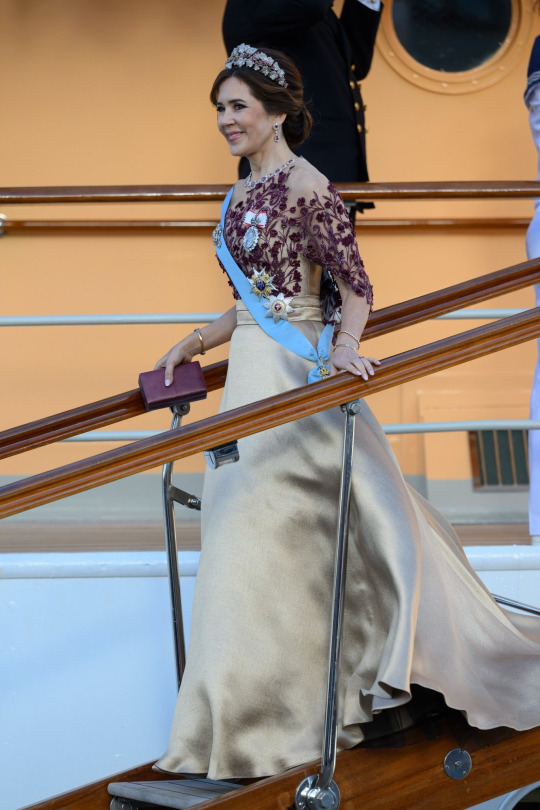


Featuring every royal yacht that has been used for reoccurring Royal holidays - Norge, Dannebrog, Pacha III and Britannia!
#royal summer 2024 challenge#norwegian royal family#british royal family#monegasque princely family#danish royal family#king harald#queen sonja#queen mary#crown princess mette marit#crown prince haakon#princess ingrid alexandra#prince philip#princess caroline
7 notes
·
View notes
Text



─ •✧ WILLIAM'S YEAR IN REVIEW : DECEMBER ✧• ─
4 DECEMBER - William wrote the Foreword for 'Two Million Shout conversations: Saving lives at scale through the power of technology'.
5 DECEMBER - The Prince of Wales joined Dave Martin in selling the Big Issue Magazine at Tesco in Hammersmith. Afterwards, he joined Catherine at the annual Diplomatic Corps Reception.
6 DECEMBER - The Waleses were spotted Christmas Tree Shopping at Windsor Great Park.
7 DECEMBER - The Prince of Wales attended a Royal Foundation Meeting at the offices in London. Afterwards, William visited Emma Webb on Day-13 of 'Leg on to London’ Mental Health fundraising and awareness campaign in memory of her daughter - Brodie. He also appeared in a video message to ICAP for ICAP Charity Day.
8 DECEMBER - William along with Catherine and their children attended the Christmas Carol Service in Westminster Abbey.
9 DECEMBER - The Wales Family's Christmas Card was released.
11 DECEMBER - William chaired a Meeting of The Prince's Council at Buckingham Palace. Afterwards he visited The Passage Charity's St. Vincent's Centre for a Pre-Christmas Lunch.
12 DECEMBER - William visited the Warrant Officers' and Senior Non-Commissioned Officers' Mess at Combermere Barracks.
14 DECEMBER - The Prince of Wales was received by His Majesty's Lord-Lieutenant of Devon (Mr. David Fursdon) as he attended the Lord High Admiral's Divisions at Britannia Royal Naval College.
18 DECEMBER - William presented condolences to The Emir of the State of Kuwait in Kuwait, following the death of The Emir Nawaf Al-Ahmad Al-Jaber Al-Sabah.
24 DECEMBER - 'Together At Christmas' Carol Service aired on ITV with a special reading by William.
25 DECEMBER - A personal tweet from Will & Cat was released wishing everyone a merry christmas. Later, they along with their children joined other members of the Royal Family for the Divine Service at Sandringham Parish Church. The Waleses appeared in a video during the King's Christmas Address.
26 DECEMBER - William appeared in 'Charles III : A Coronation Year'.
29 DECEMBER - An 'Year In Review' video was released by Kensington Palace.
30 DECEMBER - Matt Porteus released a new photograph of the Waleses attending the Coronation Concert in May.
#catherine review : december#review 2023#year in review : 2023#review december#year in review : william#year in review 2023 : william#british royal family#british royals#royalty#royals#brf#kate middleton#british royalty#royal#prince of wales#the prince of wales#prince william#william prince of wales#princess of wales#the princess of wales#princess catherine#catherine princess of wales#prince george#duchess of cambridge#prince louis#princess charlotte#royaltyedit#royalty edit#my edit#my photoset
21 notes
·
View notes
Text
Black Dick and the Spithead Mutiny
Admiral of the Fleet Richard Howe, 1st Earl Howe (1726-1799) was an extraordinary personality and spent more than 60 years in the service of the Royal Navy. On 16 April 1797 the mutiny began at Spithead, the main naval anchorage near Portsmouth.
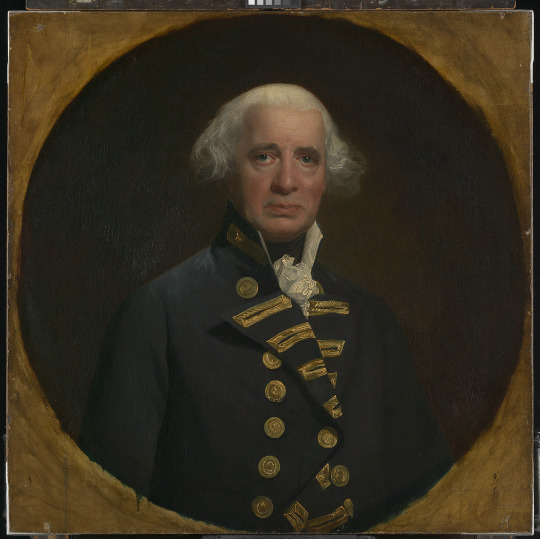
Admiral Richard Howe, 1726-99, 1st Earl Howe, by Henry Singleton (1766–1839) (x)
16 ships of the Channel Fleet raised the red flag of insurrection. The demand of the men: a rais in pay, a more equitable distribution of prize money and better victuals. When negotiations broke down between the two sides, King George III personally requested Howe.
And why him? well, he was one of the few officers who treated men well and was always fair, so he was a stalwart of the men's hearts and was even affectionately known as Black Dick. There have been a number of explanations offered for this, his swarthy complexion also known as " Sea Tan" being one and the fact that he never smiled unless a battle was about to begin may be the other one. But back to the Mutiny. Although over 70 and suffering from gout and other ailments, he agreed - but only if his dear wife Lady Howe accompanied him.

Print of a caricature published 9 June, 1797, depicting the Delegates of the mutiny meeting with Admiral Buckner. Richard Parker is the figure on the far-right. (x)
They set out on 10 May on a wild and stormy night and arrived at Portsmouth the following morning. Howe left his wife at the governor's house and immediately set out by barge for Spithead. He came alongsinde HMS Royal George, the headquarters of the insurrection, and despite his infirmities he rejected all offers to help him come aboard and clambered up unaided. He called the ship's company to the quarterdeck and started to talk to them man to man, neither reproaching their conduct nor standing on his dignity. Several hours later he went to HMS Queen Charlotte. For three days he went from ship to ship - talking, listening, heaving his rheumaticky knees and gouty feet up and down ladders until he was so tired he had to be lifted in and out of his boat. But by the end he has achieved reconciliation on both sides, with a Royal pardon for all the mutineers, a reassignment of some of the most unpopular officers and a pay rise and better victualling for the sailor.
On 15 May there was a grand celebration in Portsmouth, and the mutineers' delegates marched in procession up to the governor's house accompanied by bands playing " God Save the King" and " Rule, Britannia". The delegates were invited inside for refreshments, then appeared on the balcony with the Howes to huzzahs from the multitude, after which they set out together for the anchorage. On board Royal George Howe was given three cheers and the red flag of mutiny was pulled down; the other ships quickly followed. Later that day Lord and Lady Howe hosted a special meal for the delegates before they returned to their ships and reported for duty.
71 notes
·
View notes
Text







King Charles III (and Major Johnny Thompson) during a tour of the Royal Yacht Britannia, to mark 25 years since her arrival in Edinburgh, as part of the first Holyrood Week since his coronation, in Edinburgh | July 3rd, 2023
32 notes
·
View notes
Text


Live on TV, commented by Stéphane Bernard
Stéphane: In the British manner, the coffin of His Majesty Napoleon IV rests on a gun carriage and is fired by soldiers. This is a tribute to the ceremonies performed for Emperor Napoleon III during his exile on the Britannia Islands.

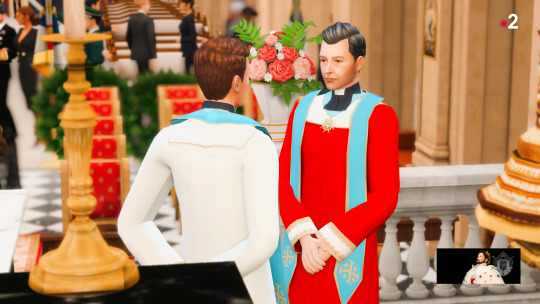

Stéphane : At the Invalides, the guests settle in for the start of the ceremony. Madame Mère thanks the dignitaries for their presence and receives condolences.
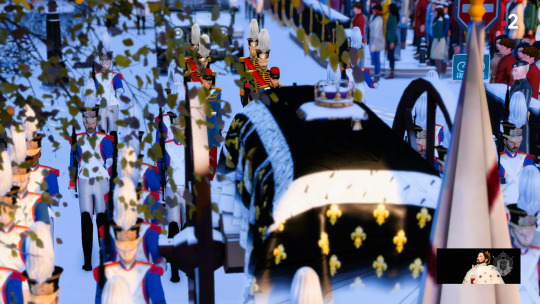
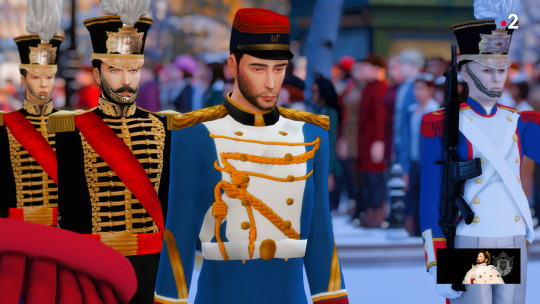

Stéphane: In the procession, the new heir to the imperial throne of Francesim, HIH Prince Imperial Henri, walks alongside his son Philippe, behind the coffin.
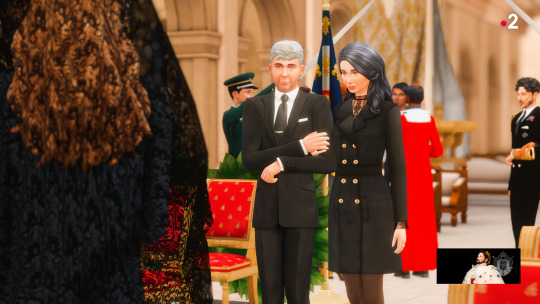

Stéphane: President of the United States and the First Lady come to pay their respects to Madame Mère. In these pictures, we can see the exceptional presence of Queen Beatriz of Uspana. Her Majesty Beatriz was a great friend of the grandfather of His Majesty the Emperor Napoléon IV. She was among the first supporters abroad of the restoration of the Simparte family to the imperial throne of Francesim.





⚜ State funeral of His Majesty Emperor Napoléon IV of Francesim ⚜
His Majesty's official funeral programme
I. Vigil in front of the Tuileries Palace in the square courtyard of the Louvre Palace
II. His late Imperial Majesty the Emperor Napoléon IV joins the cathedral of Notre-Dame de Paris
III. Monarchies of Europesim pay a first tribute to His Imperial Majesty, Emperor Napoléon IV
IV. Military parade given in honour of the Emperor Napoléon IV
V. State funeral of His Majesty Emperor Napoléon IV of Francesim : part 1, part 2, part 3, part 4, part 5
⚜ Collaborations : @officalroyalsofpierreland, @funkyllama, @armoricaroyalty, @royalsimsinsider, @royalhouseofcarrington, @simswhitehouse, @whitmoreroyals, @nexility-sims, @valencianroyals
#simparte#gen 2#sim : louis#sim : henri#sim : marie joséphine#sim : philippevictor#funeralnapoléoniv#sims 4 royal#royal sims#sims 4#ts4#ts4 royalty#ts4 royal simblr#ts4 royal story#invalides#paris
54 notes
·
View notes
Text
Cursed Rulers: Parallels Between Auberon & Emhyr
“Emperors rule their empires, but two things they cannot rule: their hearts and their time. Those two things belong to the empire.”
“The end justifies the means.”
Leaders of the highest order for their people, both rulers pursue the greater good at the expense of decency and their own humanity. A greater good to be achieved through similar means – by begetting the child who is prophesised.
Etymology
Let’s start with names for the names we give our characters often betray the backdrop from which we drew in conceiving them; especially if the author is a self-confessed fan of the subject matter.
Nilfgaard’s Emperor’s real name originates in the history of the British Isles and in the Arthurian legendarium. In Welsh, Emyr denotes “ruler” or “king.” Emreis, meanwhile, qualifies as the Welsh counterpart to the Greek Ambrose, serving as the equivalent for the Romanized Ambrosius. Ambrosius Aurelianus, a semi-mythical figure thought to have lived around the time Romans had recently left the Isles for good, was a Romano-British warlord credited with turning the tide against the invading Angles and Saxons. Very little about Sub-Roman Britain is verifiably beyond doubt, which means the era lends itself richly to myth craft (for which reason historians search within this period for the historical Arthur). Most chroniclers and myth-makers way back when were monks. Gildas mentions Ambrosius Aurelianus first in De Excidio et Conquestu Britanniae. A Roman by blood, methods and upbringing, Ambrosius is thought to have claimed the position of a High King after the Bryton Vortigern and to have ushered in over a century of peace by pushing out the Germanic tribes and defeating them at Mons Badonicus (Mount Badon). Bede describes Ambrosius as “a modest man of Roman origin, who was the sole survivor of the catastrophe in which his noble parents had perished”. From Nennius onward though, the myth grows and factual matter starts to ebb.
Geoffrey of Monmouth links Ambrosius with the wizard Merlin, Uther Pendragon (whom he makes Ambrosius’ brother) and Constantine III (allegedly Ambrosius’ father). Co-incidentally, Emreis or Emrys is also the birth-name of Merlin (Latinized from the Welsh Myrddin, the great bard). But for the sake of comparing to Emhyr var Emreis as known in the Witcher, making Constantine III the father of Ambrosius is especially noteworthy. A Roman general come to power during the Roman Britain revolt, Constantine headed out to Gaul with all the mobile troops left in Britain in 407, leaving the island vulnerable to the migration of Germanic tribes. The general ended up declaring himself the Western Roman Emperor; a position he held for two years beside the sitting emperor Honorius. Then he was put to death by another general (who, surprise-surprise, also went on to declare himself). Geoffery of Monmouth changes his Constantine III’s background a little from the historical one, but importantly for us makes it so Constantine’s sons – Ambrosius and Uther – are smuggled to Brittany after their father’s death. There the exiles are gathering strength in order to later return and challenge the usurper Vortigern. These plot beats are familiar to what we know of Emhyr var Emreis.
In Welsh, Emrys also means “immortal” but Emhyr var Emreis – despite having lived several lives – is still a mortal ruler. Auberon Muircetach on the other hand exudes eternity. So old as to appear near immortal to Emhyr’s daughter, the Alder King retains a youthful appearance despite the thousand yard stare in which is buried unimaginable sadness. In his folk origins, Auberon is leading several lives.
Bearing Hen Ichaer (ichor (Ancient Greek), blood of the gods), Auberon (Old French) appears first in the 13th century Les Prouesses et faitz du noble Huon de Bordeaux and gives Shakespeare his fairy king Oberon who rules the spirit world. In turn, the name in Old French originates in the Germanic Alberich (or Elberich), denoting “the ruler of supernatural beings.” The most well-known Alberich is probably Wagner’s, from De Ring des Nibelungen, and though called a dwarf he treads closer to Svartálfar (dark elves) in character; dwarves and elves being, on occasion, conflated in Continental Europe. An important nuance though is that Alberich much like Auberon is the keeper of his subjects’ magical treasure (Rheingold/Andvaranaut Ring, or Elder Blood respectively), which is the source of power and wealth of each one’s race. Circling back to the suitability of Shakespeare’s adoption of the name for his fairy king, the root “alb” in Alberich originally stands for “white” and forms the trunk of Albion – denoting the British Isles with its white cliff face.
The character of Auberon Muircetach (as of the other Alder elves) is linked to Goethe’s Erlkönig; a haunting force of corruption and death, a stealer of souls who covets youthful innocence. This stands in contrast to Johann Gottfried von Herder’s translation of the Danish folk ballad Elverkongen’s Datter (The Elf-King’s Daughter) which inspired Goethe but where the protagonist is a wilful, selfish female spirit. Androgyny though is not new to elves. Erlkönig translates into English variously as Erlking, the Elf-King, and the Alder King. Erle (or Elle in Old Danish) stands for “alder” in German, and Ellefolk is a folkish use of “elves” in Denmark. Calling the Otherworld elves in the Witcher Aen Elle – the Alder Folk – is thus hardly wilful. But what do elves and alder trees have in common? As elven culture and origin story in the Witcher draws heavily on the Celtic world, an amusing example emerges on the plains of Albion. During the mythical Cad Goddeu – Battle of the Trees – the alder trees are animated by Gwydion and march in the vanguard while Bran the Blessed (a Welsh God-king figure) boasts alder twigs as personal protection and heraldry. Alder is the warrior of trees; the bark bleeds when cut, changing from white to red. Alder is also linked to the realm of water and wetlands – predominant on the plains of Somerset surrounding the Glastonbury Tor (a well-known place of power and an entry to Caer Sidi and the Otherworld). Bran is wounded by a poisoned spear in the course of Cad Goddeu and so he is sometimes deemed one of the first prototypes for the Fisher King, an Arthurian figure Sapkowski’s Auberon (and elves) amounts to in lieu of symbolic fit – an ailing ruler, rendered impotent with an injury which dooms the realm. In this manner links between the Continental Erlking and Celtic mythos shape up.
Finally, Muircetach – an alteration of the Irish Muirchetach also stands for “mariner.” Befitting of an Elf-King who has traversed the seas of time and space.
Intent
In the Witcher, both Auberon and Emhyr are embroiled in a plot of siring the child of prophecy with Cirilla Fiona Elen Riannon – their blood relative. Genetically, the incest is a matter of degree: Emhyr is Ciri’s biological father, Auberon Ciri’s ancestor 8 generations past. Symbolically, however, the degree collapses with Auberon because a few human generations are meaningless to elves. They call Ciri Lara’s daughter, effectively deeming Ciri Auberon’s granddaughter. But the reader – not unlike Ciri herself – won’t know about this until the very end of the tale.
Notionally, both rulers bind their actions with Ithlinne’s prophecy. The problem with prophecies is they decouple arguments from verification, lending themselves to the rationalization of all and any action. At least insofar as knowing the future accurately is impossible. This is the case for humanity, it is not the case for elves. Elven prophecies were made by the elves and for the elves in the first place. Consequently, the degree to which each ruler knows the prophecy to be true and believes in it differs. For Emhyr, mystical secret knowledge of the universe is irrelevant in comparison to political expedience: reason of state is what the tomorrow will bring. The Nilfgaardian Emperor is neither a mystic nor a fatalist. Contrary to the Alder King – a Sage, a ruler, and an elder – who has witnessed and likely verified some of what the Seers have prophesised. Elves conceive of the nature of time as cyclical in which the fate of things is tied up in the endless repetition of endings giving birth to new beginnings, the dance of attraction between life and death, two sides of the same coin which form the singular eternal truth of existence – change is only an eternal reoccurrence and re-arrangement of all. Auberon, you see, is a bit of a mystic. And even without Seers privy to secret knowledge, an extraordinary life span reduces the elves’ proclivity to black swan fallacy, or at least pushes the error probabilities. But at the end of the day, mysticism takes the cake.
The idea that either ruler must be the progenitor, however, comes at the instigation of an outside force.
Shortly after Ciri’s birth Emhyr is visited by a sorcerer. Emhyr has a strong aversion to mages; he was cursed by one. Even so, Vilgefortz proves himself capable of helping him regain the Nilfgaardian throne and is straightforward about what he wishes in exchange – gratitude, favours, privileges, power. Vilgefortz tells Emhyr about Ithlinne’s prophecy – a version about the fate of the world; a human interpretation. Then he plants the seed as to what Emhyr should do to steer the fate of this world. Naturally, he has his own agenda. It is not a huge leap of imagination to conceive of Auberon having been similarly persuaded by Avallac’h (an elven Knowing One who thematically parallels the human Vilgefortz). Not only are Avallac’h and Auberon tied by broken familial bonds, they are each a participant of the Elder Blood programme; and each, a Sage. Avallac’h serves nearly as a double for Auberon, his own fate also tied with Ciri’s. And Auberon is a “willing unwilling” in his arrangement with Ciri; implied so in his rage when he reveals Ciri ought to be grateful to him for lowering himself to the endeavour at all. There is an alternative.
Neither the Emperor nor the Alder King is pursuing the incestuous course of action out of lust. But both have the option to waive being the sire. Ithlinne’s prophecy is not explicit about the father of the Swallow’s child. For elves the match is backed by science. For humanity – pragmatism.
Emhyr has ordered to wipe out the Usurper’s name from the annals of history and is cementing his earthly power, conquering and ensuring the succession laws play out in his favour. Not only is he legitimatizing his rule over Cintra – the gateway to the North – by marrying its last monarch’s granddaughter, by keeping it in the family, he is also consolidating his rule among the Nilfgaardian aristocracy. The Emperor’s concern lies with the dynastic struggle for power: it is his blood that should rule the world and because history is bending its arc according to Nilfgaard’s dictation that means surmounting the Nilfgaardian succession laws. From such perspective, not fathering Ciri’s child would create numerous problems. Ciri as Emhyr’s heir would remain behind any other male offspring he might have (with any Nilfgaardian aristocrat). Ciri might not be acknowledged as a legitimate successor in Nilfgaard in the first place as she is a foreigner, born in Cintra at a time when her father was not yet an emperor; a bastard, effectively, and a girl besides. Ciri’s husband, moreover, may have designs on power himself and his remaining under Emhyr’s control, or Ciri’s control, is not a guarantee. It is difficult to be the correctly-shaped chess piece in a game of interests of the state. That a widely recited prophecy about the fate of the world can lend an aura of destiny to the brutal political machinations undertaken to seek retribution and pursue earthly power is convenient; a descendant who will be the ruler of the world – a bonus. But to get there sacrifices must be made.
‘Cirilla,’ continued the emperor, ‘will be happy, like most of the queens I was talking about. It will come with time. Cirilla will transfer the love that I do not demand at all onto the son I will beget with her. An archduke, and later an emperor. An emperor who will beget a son. A son, who will be the ruler of the world and will save the world from destruction. Thus speaks the prophecy whose exact contents only I know.’
’What I am doing, I am doing for posterity. To save the world.’
- Lady of the Lake
Notably, the manner in which the Emperor claims to understand Ithlinne’s prophecy does not make guarantees that a father’s incest with his daughter will ensure his progeny will one day save the world. The saviour is a few generations away and the causal arrow between now and then is not direct: the son could die, could father a child with a genetically non-fitting partner, could be sterile, or could turn out to be a daughter altogether. Not to even begin with what the world needs saving from in the first place; again, elven prophecies were written by the elves and for the elves. Emhyr var Emreis is neither an elf, a geneticist, an idealist nor a mystic. He is an autocrat.
Elder Blood is the creation of elves and it is elves who understand how their genetic abilities play into handling what was foretold by Ithlinne. Emhyr’s daughter, the Lady of Time and Space, is the descendant of an Alder King who has utilized Hen Ichaer in the past and whose ambitions lie in an altogether different ball park than that of an Emperor of one single world. Appropriately to the Saga’s love for subversion, it is ironic that human understanding of elven prophecies remains on the level of poetry, while elves – the irritatingly poetic, mystical species – can read the science elevating the prophetic jargon into something more. Which regardless does not invalidate the problem with prophecies: they lend themselves to the rationalization of action, frequently covering up the real horses the powerful might have in the race. Legitimatization of the ruler’s right to remain the leader of their people is relevant in Auberon’s life too. More on that when we return to the Fisher King parable and the nature of curses upon the two rulers.
Role & Relationships
Let’s take a look at the characters’ personalities.
Appearance: a play of contrasts
A very tall, slender elf with long fingers and ashen hair shot with snow-white streaks. An elf with the most extraordinary eyes – as on all Elder Blood carriers – reminiscent of molten lead. A man with black, shiny, wavy hair bordering an angular, masculine face that is dominated by a prominent nose (hooked, presumably, or Roman if you like). The Emperor of Nilfgaard does not resemble an androgynous elf by any means. But this does not mean nothing remains in him of the elven gene pool. Not only does Emhyr’s etymological origin link with the Romano-Celtic world underpinning all things elven in the Witcher. Nilfgaardians are effectively the Romano-Brytons. The human population in the South of the Continent mixed with elves heavily, retaining a lot of elven law, customs, language, and DNA. As Avallac’h says about heritability, “the father matters,” and Emhyr was one half of the equation for getting Ciri.
Rex Regum - King of Kings
The readers are probably more familiar with the imperial system and how that features in the depiction of Nilfgaard. Auberon Muircetach’s position as the Supreme Leader of the Aen Elle – as opposed to merely a “king” – is instead much more reminiscent of the station of a High King.
Ancient and early kingdoms of Great Britain and Ireland boast many High Kings (e.g. Ard Rí Érenn Brian Boru, Ard Rí Alban Macbeth, Vortigern, King of the Britons, etc). The High King was usually elected and set above lesser rulers and warlords as an overlord in a land that shared a high degree of cultural unity. Emperors usually ruled over culturally different lands (regularly obtained through recent or ongoing conquests). In character such high kingship was sacred: the duties of the ruler were largely ceremonial and somewhat restricted, unless war, natural disaster or any other realm-wide occasion created a need for a unified command structure. The Irish High King, for example, was quite straightforwardly a ruler who laid claim to all of the land of the Emerald Isle. Noteworthy, because the ruler is frequently seen as the embodiment of the land, associated with the health and well-being of the realm that the land sustains. In quasi-religious terms, High Kings gained their power through a marriage to, or sexual relationship with, a sovereignty goddess; frequently, a mother goddess who was associated with the life-giving land. As one of the most frequently studied elements of the Celtic cosmology, this feature is instantly recognisable in the outlook of the elves in the Witcher and factors heavily into Auberon’s relationship with Ciri. Ciri who is the avatar of the Triple Goddess – the Virgin, the Pregnant Mother, and the Old Woman Death. As Sapkowski notes in Swiat króla Artura. Maladie:
“…no Wiccan mystery in honour of the Great Triple, cannot be performed, [without] the goblet and the sword.
Grail and Excalibur. The rest is silence.”
Through the Triple Goddess’ interaction with her God-counterpart (a ruler who briefly assumes the role of the god) is showcased the eternal cycle of life – one which cannot be realised without the interaction of the cup (feminine) & the sword (male). Excalibur is the symbol of rightful sovereignty and its wielders are frequently powerful men, but Ciri is a woman and a woman is the Grail, bringing salvation and new life. To possess the Grail is to legitimize oneself as the ruler, as the leader, protector, and father figure of the realm. Thus a King of Kings must do exactly that. A protector, a father figure, and a druid (wise man) merge into a symbolic whole in the Supreme Leader of the elves.
(But Ciri is also the witcher girl and owns a sword, unyielding before the matter of her gender. And though many a men might take her for the Lady of the Lake, she is not about to part with her sword.)
The realm is all
From early age, Emhyr’s father instilled an understanding in his heir that nothing counts more than the interest of the state. The blood of the Emreis family must be on the throne. Fergus never abdicated, not after torture, not even after his son was turned into a mutant hedgehog in front of his eyes. Love for his child did not sway Fergus from having his son suffer in the interests of power and the realm. This is how the shard of ice in Emhyr’s heart forms. Auberon, equally, “thinks of England” when attempting to regain his daughter’s legacy and restore their people’s power. The circumstances of Lara’s demise, however, beg the question about the Alder King’s role in facilitating or enabling the conditions that let things spiral out of control and break beyond repair. The stakes were infinitely higher for Auberon than they are for Emreis’ dynastic struggle. But what would an answer to this question change? In their cold hearts these characters see themselves each as duty-bound.
Ambitious and gloried, they nevertheless occupy different stages in their lives.
Emhyr’s ambition burns bright and fresh. Auberon’s has dwindled into a shadow of the past; buried under having witnessed and lived through the sacrifices that a ruler makes in the name of power. Emhyr chooses to seek retribution and power beyond what would befall him should he accept his life as Duny (the cursed, pitiful Duny), the prince consort of Cintra. Never losing sight of his goal, love and human happiness become temporary phases and means to an end, and Emhyr returns to Cintra only in the form of flames and death to pursue his daughter in insane ambition. The White Flame retains an active disposition; a lust for life. Neither Emhyr nor Auberon gallop at the head of their armies though, leading instead from the rear. They have lackeys for carrying out their will remotely (e.g. Cahir and Eredin). Emhyr, however, is said to be otherwise highly involved in the ruling of his empire, even if many revolutionaries who had helped him on the throne had hoped he would remain but a banner of the revolution. In contrast, the Alder King has more or less withdrawn from life and active service. In presence of Avallac’h and Eredin, Auberon appears much more like the standard Emhyr had refused to become. Of course, many decisions the equivalent of which Auberon has already made are still ahead of Emhyr, including as concerns the freedom of his daughter.
A ruler’s heart
Did Emhyr believe that he would be able to see Pavetta in Ciri and thus push through with the incest? Did Auberon hope to glance the memory of his wife in the eyes of Lara’s “daughter” and manage in this way? As already noted, neither ruler is pursuing their plans out of lust, but as lust must be induced for the act to bear fruit I cannot help but wonder what these characters must do to themselves to follow through with their plans. Because the love that is called for between a woman and a man in order for new life and hope to be born is in this instance abnormal. Yet it is undoubtedly love that plays a huge role in determining both Emhyr’s and Auberon’s eventual fate.
Until the emergence of false-Ciri, Emhyr var Emreis is said to have had numerous ladies in the imperial court. Little is known about Auberon’s disposition, but by the time Ciri starts frequenting his bed chamber it has become evident the image of a dowager king fits the elf like a glove; disaffected with romantic dalliance, he is still aware of the courtly intrigue and expectations surrounding it.
The next evening, for the first time, the Alder King betrayed his impatience.
She found him hunched over the table where a looking glass framed in amber was lying. White powder had been sprinkled on it.
It’s beginning, she thought.
…
At one moment Ciri was certain it was about to happen. But it didn’t. At least not all the way.
And once again he became impatient. He stood up and threw a sable fur over his shoulders. He stood like that, turned away, staring at the window and the moon.
- Lady of the Lake
Emhyr’s marriage to Pavetta, Ciri’s mother, was an unhappy one. In his own words, he did not love “the melancholy wench with her permanently lowered eyes,” and eventually would have had the vigilant Pavetta killed. Inadvertently, Emhyr caused Pavetta’s death anyway.
‘I wonder how a man feels after murdering his wife,’ the Witcher said coldly.
‘Lousy,’ replied Emhyr without delay. ‘I felt and I feel lousy and bloody shabby. Even the fact that I never loved her doesn’t change that. The end justifies the means, yet I sincerely do regret her death. I didn’t want it or plan it. Pavetta died by accident.’
‘You’re lying,’ Geralt said dryly, ‘and that doesn’t befit an emperor. Pavetta could not live. She had unmasked you. And would never have let you do what you wanted to do to Ciri.’
‘She would have lived,’ Emhyr retorted. ‘Somewhere … far away. There are enough castles … Darn Rowan, for instance. I couldn’t have killed her.’
‘Even for an end that was justified by the means?’
‘One can always find a less drastic means.’ The emperor wiped his face. ‘There are always plenty of them.’
‘Not always,’ said the Witcher, looking him in the eyes. Emhyr avoided his gaze.
‘That’s exactly what I thought,’ Geralt said, nodding.
- Lady of the Lake
After Pavetta’s demise Emhyr hounds his own daughter to the ends of the earth, killing her grandmother, burning down her home, and driving Ciri into an exile from which she never fully recovers. An exile which kills the innocence in her; the snow-white streaks in Ciri’s hair are from the trauma. In contrast, Auberon does not seem to even know what became of Shiadhal – his partner and the mother of their daughter together. On the verge of death he confuses Ciri for Shiadhal and says, “I am glad you are here. You know, they told me you had died.” The Alder King recalls Shiadhal affectionately, in the same loving breath as he recalls their daughter Lara. Lara whose exile – voluntary or not – killed her.
When Ciri was six years old, Emhyr took a lock of hair from her and held onto it; out of sentiment and for his court sorcerers to use. One of Auberon’s last lines to Ciri involves tying a loose ribbon back into Lara’s hair.
In regard to their brides-to-be, both rulers are saddled with fakes. A fake Ciri-Pavetta and a fake Shiadhal-Lara. But Emhyr’s and Auberon’s attitude toward the fake is diametrically opposite. Emhyr sees false-Cirilla as “a diamond in the rough.” Auberon calls Ciri “a pearl in pig shit, a diamond on the finger of a rotting corpse.” For Emhyr, a diamond is the essence of his poor peasant girl. While a pearl in pig shit, for Auberon, remains the essence of Ciri. Neither ruler can entirely ignore the social vigilance extended toward the ruler’s bedchamber either. The idea of a “foreign bride” is frowned upon among the Nilfgaardian aristocracy; it decreases their ability to influence the Emperor. Ciri’s social status at Tir ná Lia is never explicitly addressed, but the presence of human servants – all of whom that the reader sees are female – and casual xenophobia from Auberon himself does not make it hard to venture a guess.
‘If I were … the real Cirilla … the emperor would look more favourably on me. But I’m only a counterfeit. A poor imitation. A double, not worthy of anything. Nothing …’
- False-Cirilla
Lady of the Lake
‘It’s all my fault,’ she mumbled. ‘That scar blights me, I know. I know what you see when you look at me. There’s not much elf left in me. A gold nugget in a pile of compost—’
- Ciri
Lady of the Lake
The Alder King is unable to bring himself to love Ciri. The Emperor relents, caring for his daughter at last as a father should at the very end, in the one moment where it matters. Moreover, Emhyr ends up eventually marrying his own reason of state and comes to love the false-Cirilla. The contrasts do not end here. Real Ciri threatens to tear Emhyr’s throat out for what he is planning to do to her (unknowing that he is her father), yet with Auberon Ciri turns submissive and grows attached. She weeps over Auberon’s corpse and vows vengeance on Eredin for killing the Alder King. Ironic as Auberon never intended to let Ciri go, while Emhyr does let his daughter walk free. The shard in Auberon’s heart never melts. It shifts in Emhyr’s.
In their last meeting with the girl, both rulers implicitly reveal their blood relation to Ciri.
Cursed Rulers of the World
Emhyr’s tale begins and is framed with a curse. Likewise Auberon’s. And for both it is love in its different manifestations that will shift the curse just enough to offer closure. For healing largely entails obtaining closure.
‘They were silent for a long time. The scent of spring suddenly made them feel light-headed. Both of them.
‘In spite of appearances,’ Emhyr finally said dully, ‘being empress is not an easy job. I don’t know if I’ll be able to love you.’
She nodded to show she also knew. He saw a tear on her cheek. Just like in Stygga Castle, he felt the tiny shard of cold glass lodged in his heart shift.’
- Lady of the Lake
The reference to H. C. Andersen’s fairy tale of the Snow Queen is self-evident. Emhyr var Emreis is an Emperor whose heart has been pierced by a shard of ice. In the Saga the legend is elven and refers to the Winter Queen who conducts a Wild Hunt as she travels the land, casting hard, sharp, tiny shards of ice around her. Whose eye or heart is pierced by one of them is lost; they will abandon everything and will set off after the Queen, the one who wounded them so gravely as to become the sole aim and end of their life.
There are two ways in which to interpret the way Sapkowski applies the legend of the Snow Queen in the Saga. First, as a complement to the author’s stance that in life - where most things are shit - the Holy Grail is a woman, because it is the love of a woman and the hope a woman instils that often makes men act in inconceivable ways; love is the great motivator and the great balancer of scales. Almost as powerful as death. Or more so?
‘I would not like to put forward the theory that hunting for the wild pig was the primordial example of the search for the Grail. I don't want to be so trivial. I will - after Parnicki and Dante - identify the Grail with the real goal of the great effort of mythical heroes. I prefer to identify the Grail with Olwen, from under whose feet, as she walked, white clovers grew. I prefer to identify the Grail with Lydia, who was loved by Parry. I like New York in June… How about you?
Because I think the Grail is a woman. It is worth investing a lot of time and effort in order to find it and gain it, to understand it. And that's the moral.’
- A. Sapkowski
Swiat króla Artura. Maladie
In this reading, we find the framing to the stories of Geralt and Yennefer, Lara and Cregennan, Avallac’h and Lara, and many others. Including the story of Ciri herself – for Ciri is ultimately the author’s Grail in more ways than one. More than one party goes to great lengths to solicit her favour in a guise that includes elements of a love relationship but not the heart of it.
Secondly, we can interpret the legend in universal terms: the shard of ice is the definitive experience of our lives which distorts reality and makes the rest of our lives spin around it in one way or another. For Emhyr, such an experience could have been the trauma experienced in his youth. Fergus’ uncompromising death conditioned the boy early on to sacrifice personal feelings to the cause and let the only true feeling in his heart remain forever locked behind the ends a ruler must go to unthinkable lengths to achieve. Fergus did not deem his son above suffering for a cause and the son learned the lesson. Until…
In Andersen’s Snow Queen, Gerda manages to find her brother Kai in the Snow Queen’s castle, but despite her calls his heart remains cold as ice. Only when Gerda cries in despair do her tears finally melt the ice and remove the piece of glass from Kai’s eyes and heart. In the Witcher, the shard in Emhyr’s heart moves first upon witnessing his true daughter’s angry tears. For the second time – in thanks to the bogus princess of Cintra; his poor raison d’etat.
It brings us to the defining contrast in Emhyr’s and Auberon’s stories, and it concerns alleviating the suffering of those are bound to you by blood or love.
Recalling another case of incest that resulted in Adda the strigga, we may remember that the Temerian king recognises that his daughter is suffering and insists on disenchanting her instead of killing her. Realising that your own blood – who has been thrown into this world of suffering thanks to you – is suffering and consequently choosing to do something to alleviate this suffering fortifies the Saga’s faith in enduring human decency. Geralt himself is thoroughly vexed by the prospect of letting the same evil happen to Ciri that happened to himself and does everything within his power to prevent it (failing, trying anyway). Here lives the redemption of man, and in redemption his rebirth.
‘They passed a pond, empty and melancholy. The ancient carp released by Emperor Torres had died two days earlier.
“I’ll release a new, young, strong, beautiful specimen,” thought Emhyr var Emreis, “I’ll order a medal with my likeness and the date to be attached to it. Vaesse deireadh aep eigean. Something has ended, something is beginning. It’s a new era. New times. A new life. So let there be a new carp too, dammit.”’
- Lady of the Lake
As Emhyr and false-Cirilla take a stroll in the gardens after Stygga, they pass a sculpture of a pelican pecking open its own breast to feed its young on its blood. An allegory of noble sacrifice and also of great love – as False-Ciri tells us.
‘Do you think—’ he turned her to face him and pursed his lips ‘—that a torn-open breast hurts less because of that?’
‘I don’t know …’ she stammered. ‘Your Imperial Majesty … I …’
He took hold of her hand. He felt her shudder; the shudder ran along his hand, arm and shoulder.
‘My father,’ he said, ‘was a great ruler, but never had a head for legends or myths, never had time for them. And always mixed them up. Whenever he brought me here, to the park, I remember it like yesterday, he always said that the sculpture shows a pelican rising from its ashes.’
- Lady of the Lake
It is difficult to set aside our trauma and not pass it on to our children. Letting our children be free to choose and not sacrificing them on the altar of our fate is to rip open ourselves, calcified and bound to our path, and to feel all of it as we grope in the dark to feel for them. Emhyr’s father might not have gotten it entirely wrong, though his mind at the time was set on making his child an extension of himself. The cycle of death and rebirth begins and ends within that to which we give birth. Giving our children a chance before it is too late, we also give a chance to ourselves. By finding it in his heart to extend to his daughter the courtesy his father Fergus never extended to him - by letting Ciri free - Emhyr lets the part of himself that has defined his entire life die. His end stops justifying the means. He breaks the cycle on the edge of the precipice to which he has brought them and thus allows for the possibility of new beginnings for himself and for Ciri.
In a sense, False-Cirilla and Emhyr get the ending Ciri and Auberon might have gotten if –
If.
The story of Auberon Muircetach achieves a fundamentally different resolution.
‘What does the spear with the bloody blade mean? Why does the King with the lanced thigh suffer and what does it mean? What is the meaning of the maiden in white carrying a grail, a silver bowl—?’
- Galahad
Lady of the Lake
Galahad asks the questions that the innocent Perceval in his Story of the Grail failed to ask, thus losing his chance at freeing the Fisher King from his curse. And the Fisher King is the guardian of mysteries, among them the Holy Grail. But it is not because of gain that a chivalric knight with a shining sword should seek to free the Fisher King from his curse, but rather because it is a human thing to do. Sapkowski claims to be partial to Wolfram von Eschenbach’s rendition of the Grail myth in Parsifal. Wolfram’s message, according to Sapkowski, is the following:
‘Let's not wait for the revelation and the command that comes from above, let's not wait for any Deus vult. Let's look for the grail in ourselves. Because the Grail is nobility, it is the love of a neighbor, it is an ability for compassion. Real chivalric ideals, towards which it is worth looking for the right path, cutting through the wild forest, where, as they quote, "there is no road, no path". Everyone has to find their path on their own. But it is not true that there is only one path. There are many of them. Infinitely many. … Being human is important. Heart.’
‘I prefer the humanism of Wolfram von Eschenbach and Terry Gilliam from the idiosyncrasies of bitter Cistercian scribes and Bernard of Clairvaux...’
- A. Sapkowski
Swiat króla Artura: Maladie
The unimaginable sadness in Auberon’s eyes belies the suffering of the Alder King who is the avatar of the Fisher King. In the Witcher’s story between elves and humans, it is the elven males who all share aspects of the Fisher King’s fate, because they are the keepers of their Grail – the protectors of elven women. Auberon’s wound is wrought by time: by surviving his wife and daughter, by the witnessing of the fading of his ambitions and the results of pursuing them without success. He has lost his line. The Fisher King’s injury represents the inability to produce an heir. A ruler who is the protector and physical embodiment of his land, yet remains barren, sterile, or without a true-born successor, bodes ill for the realm. The Alder King’s injury consists in having lost control of the source of his people’s power, leaving the elves imprisoned and scattered across two worlds. Auberon’s personal tragedy, however, subsists in the lost power having been functionally manifest in a daughter.
‘Lara.’ The Alder King moved his head, and touched his neck as though his royal torc’h was garrotting him. ‘Caemm a me, luned. Come to me, daughter. Caemm a me, elaine.’
Ciri sensed death in his breath.
- Lady of the Lake
Elder Blood is indeed an accursed blood because it enslaves its carriers to its purpose. Emhyr has a theoretical chance to walk away from the pursuit of earthly power; the construct is social. Elder Blood, however, has a particular and real, magical function, and in virtue of being a genetic mutation it is embedded in the gene-carrying individuals. Functionally, Elder Blood allows to shape fate with degrees of freedom unimaginable for an ordinary individual. It’s a difference comparable to the one between a character in a story and the story’s author. Therefore the Aen Saevherne – the carriers of the gene – are bound to the thing they carry within their DNA that allows them to a greater and lesser degree shape the fate of reality. However dearly Auberon, or Lara, might have ever wished to untie themselves from their own essence, it seems impossible. The loss of control over power then is quite simply so pivotal as to necessitate a moment of original sin.
As already witnessed by way of the legend of the Winter Queen, the original “myths” of the Witcher world usually originate among elves; humans, the interlopers, push themselves into those myths only later. This creates an interesting conundrum. In Parsifal, the Fisher King is injured as punishment for taking a wife who is not meant for him. A Grail keeper is to marry the woman the Grail determines for him, which – if we equate woman with the Grail – is what the woman determines. Unfortunately, we know nothing about Shiadhal, so we cannot verify if this part of the legend dovetails. But generally, in a wholly elven world which may have matriarchal tendencies, in lieu of worshipping the mother Goddess, such cosmology is relatively unproblematic. Except suddenly there are humans too. And Auberon – the highest leader of elves and the father of the new scion of Elder Blood – is indirectly injured because a human sorcerer – Cregennan – turns himself into a Grail keeper (in place of another, special elf) by taking a woman not meant for him.
‘Witcher,’ she whispered, kissing his cheek, ‘there’s no romance in you. And I… I like elven legends, they are so captivating. What a pity humans don’t have any legends like that. Perhaps one day they will? Perhaps they’ll create some? But what would human legends deal with? All around, wherever one looks, there’s greyness and dullness. Even things which begin beautifully lead swiftly to boredom and dreariness, to that human ritual, that wearisome rhythm called life.’
- Yennefer
Sword of Destiny
Cregennan’s injury is to die. But what about the original Fisher King figure? What is Auberon’s original sin in this?
I see two possibilities. It could be that Auberon in his ambition hastened his daughter’s way into exile and, in a display of his displeasure, never made any effort to ease his daughter in to the personal sacrifices they, as Aen Saevherne, must make; walking without blinking to the end of the path Emhyr turned away from. It could equally be that Auberon, instead of locking Lara up in a tower to protect her from the folly of youth, let her go to Cregennan. It could be an amalgam of both, and the misjudgement of a father who allows freedom, who feels for his child, and is rewarded with an irreversible injury is probably the greater tragedy.
Because, regardless of the origin of the curse upon Auberon, one thing does not change – the icy eternity in the Alder King’s heart never fractures.
‘‘Zireael,’ he said. ‘Loc’hlaith. You are indeed destiny, O Lady of the Lake. Mine too, as it transpires.’
- Auberon
Lady of the Lake
Ciri passes through the shadow world of the Alders; a manifestation of fate. Her footsteps sowing discord and movement and change into the immutable, time-locked amber of the elven utopia. Her presence providing the trigger that will unshackle the past from future in a world where for a long time nothing has changed, died, or been reborn. She is destined and destiny, annihilation and rebirth, the grain of sand in the gears of the great mechanism; a strange girl. The child of hope and the Goddess who ought to be Three. Lara, the true daughter of the Alder King, is dead. Emhyr’s daughter still lives. There is nothing Auberon can do for Lara anymore and thus the ice in Auberon’s heart has crystallised. Emhyr still has a chance; he is where Auberon once was. And yet, there is one thing Ciri, the witcher girl with a sword of her own, can still do for the Alder King.
‘Va’esse deireadh aep eigean… But,’ he finished with a sigh, ‘it’s good that something is beginning.’
They heard a long-drawn-out peal of thunder outside the window. The storm was still far away. But it was approaching fast.
‘In spite of everything,’ he said, ‘I very much don’t want to die, Zireael. And I’m so sorry that I must. Who’d have thought it? I thought I wouldn’t regret it. I’ve lived long, I’ve experienced everything. I’ve become bored with everything … but nonetheless I feel regret. And do you know what else? Come closer. I’ll tell you in confidence. Let it be our secret.’
She bent forward.
‘I’m afraid,’ he whispered.
‘I know.’
‘Are you with me?’
‘Yes, I am.’
- Auberon
Lady of the Lake
The only way Ciri the Grail knight will be able to find her true self – the Grail – is to cure the suffering Alder King from his curse. Ciri’s presence in the world of the Alders is after all also part of her coming of age story. Through becoming Auberon’s destiny, Ciri must close the circle for him and bring closure. He would never let her go because the shard in Auberon’s heart is no longer able to melt. Auberon does not follow the motif of alleviating the suffering of one’s blood and/or love; and he dies. The roles are reversed, in fact. It is Ciri who realises Auberon is suffering. So Ciri must do what only she can do, because remaining human is important. Heart is important. The sacrifice a ruler makes on the altar of power includes his own heart, which is why there should never be only one, but always two; always.
‘Time is like the ancient Ouroboros. Time is fleeting moments, grains of sand passing through an hourglass. Time is the moments and events we so readily try to measure. But the ancient Ouroboros reminds us that in every moment, in every instant, in every event, is hidden the past, the present and the future. Eternity is hidden in every moment. Every departure is at once a return, every farewell is a greeting, every return is a parting. Everything is simultaneously a beginning and an end.
‘And you too,’ he said, not looking at her at all, ‘are at once the beginning and the end. And because we are discussing destiny, know that it is precisely your destiny. To be the beginning and the end. Do you understand?’
She hesitated for a moment. But his glowing eyes forced her to answer.
‘I do.’
- Lady of the Lake
Death Crone to Auberon Muircetach, Ciri never becomes the Mother Goddess in the Saga. It is a choice she must make for herself and the choice still lies ahead of her. The predicate to making such a choice at least for now, however, she achieves; she goes her own way. In a sense then, both rulers are father figures, who through their choices “beget” the child who is destined. Perhaps this too the Knowing Ones knew, and for this reason Auberon never could have budged, never could have changed his mind in regard to his purpose in the long and winding story of his life. Something is ending, but something is also beginning. A good ruler is responsible for the flourishing of their realm, for providing hope. It is Ciri’s role to be the beginning and the end, and though there might be ways in which to nudge the hand of Fate, whatever is destined must happen. Destiny, however accursed, must run its course.
That is the hope and the release.
---
If you like my writing, consider buying me a coffee.
Thanks! ❤️
#wiedźmin#the witcher#andrzej sapkowski#the witcher lore#the witcher meta#analysis#auberon muircetach#emhyr var emreis#cirilla fiona elen riannon#ciri#aen elle#nilfgaard#arthurian legend#arthuriana#Swiat Krola Artura#wicca#celtic mythology#history of the british isles#elder blood#lara dorren#fisher king#snow queen#fairy tales#longform#writing#false-cirilla#tw: inc*st#aen saevherne#ithlinne's prophecy#winter queen
44 notes
·
View notes
Text
Sixth list of accepted ships
Hello, this is the sixth of eight lists featuring the ships that have been elected for the tournament!
Scott Summers/Warren Worthington III, Marvel Comics
Lloyd Garmadon and Brad Tudabone, Lego Ninjago
Shadow the Hedgehog and Blaze the Cat (Shadaze), Sonic the Hedgehog
Franziska von Karma and Maya Fey, Ace Attorney
Lego Batman and the Joker, The Lego Batman Movie
Fenton Crackshell-Cabrera and Gandra Dee, Duck Tales 2017
Suzaku Kururugi and Lelouch vi Britannia, Code Geass
Kaedehara Kazuha & Wanderer/Scaramouche (KazuScara), Genshin Impact
PD: Feel free to send me the name of the ships!
#list of accepted ships#scott summers#warren worthington#marvel comics#lloyd garmadon#brad tudabone#lego ninjago#shadow the hedgehog#blaze the cat#shadaze#sonic the hedgehog#franziska von karma#maya fey#ace attorney#lego batman#the joker#the lego batman movie#fenton crackshell cabrera#gandra dee#duck tales 2017#suzaku kururugi#lelouch vi britannia#code geass#kaedehara kazuha#wanderer#scaramouche#genshin impact#kazuscara
19 notes
·
View notes
Text
My Top 75 Favorite Anime Villains
Had to put a lot of thought into this, but here it is in full evil glory!

1. Cell (Dragon Ball)

2. Light Yagami (Death Note)
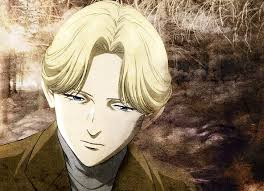
3. Johan Liebert (Monster)

4. Gendo Ikari (Neon Genesis Evangelion)
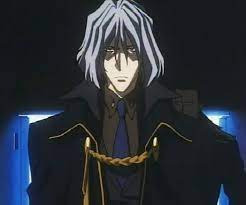
5. Vicious (Cowboy Bebop)

6. Myotismon (Digimon Adventure)

7. Freeza (Dragon Ball)

8. Dewey Novak (Eureka Seven)

9. Zorc the Dark One/Yami Bakura (Yu-Gi-Oh!)

10. Askeladd Olafson (Vinland Saga)
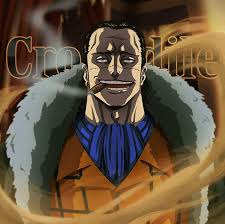
11. Sir Crocodile (One Piece)
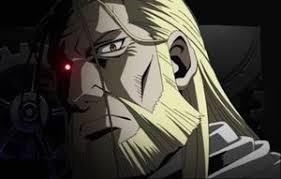
12. Father (Fullmetal Alchemist)

13. Griffith (Berserk)

14. Shinobu Sensui (Yu Yu Hakusho)

15. Queen Beryl (Sailor Moon)

16. Giovanni (Pokemon the Series)

17. Gakuho Asano (Assassination Classroom)
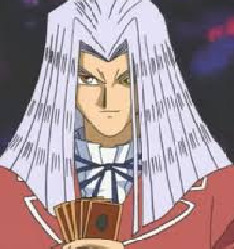
18. Maximillian Pegasus (Yu-Gi-Oh!)

19. Reiji Miyabi/Head (Star Driver)

20. Kyubey (Puella Magi Madoka Magica)

21. The Major (Hellsing Ultimate)

22. The Dark Gundam (Mobile Fighter G Gundam)
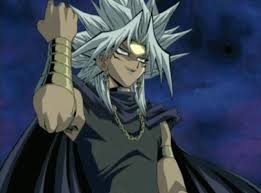
23. Marik Ishtar (Yu-Gi-Oh!)

24. Ken Ichijouji (Digimon Adventure 02)

25. Katsuhiko Jinnai (El Hazard)

26. Rosemary Applefield (Nadja of Tomorrow)

27. Suzaku (Yu Yu Hakusho)

28. Makoto Shishio (Rurouni Kenshin)

29. Younger Toguro (Yu Yu Hakusho)
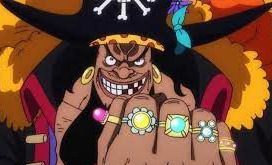
30. Blackbeard (One Piece)
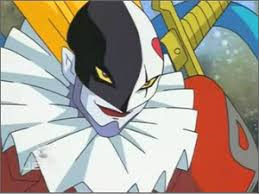
31. Piedmon (Digimon Adventure)

32. Zofis & Koko (Zatch Bell)

33. Master Asia (Mobile Fighter G Gundam)

34. Xellos Metallium (The Slayers)

35. Yukio Oikawa (Digimon Adventure 02)
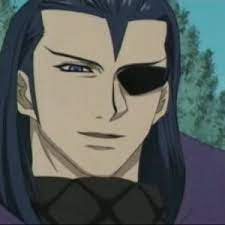
36. Lord Darcia III (Wolf’s Rain)

37. Akito Sohma (Fruits Bakset)

38. Akio Ohtori (Revolutionary Girl Utena)

39. Lelouch Vi Britannia (Code Geass: Lelouch of the Rebellion)

40. Vegeta (Dragon Ball)

41. Rezo the Red Priest (The Slayers)

42. Professor Tomoe/Germatoid (Sailor Moon S)

43. Colonel Muska (Castle In The Sky)

44. Shinsuke Takasugi (Gintama)

45. Ryoko Asakura (The Melancholy of Haruhi Suzumiya)

46. Toya Todoroki/Dabi (My Hero Academia)

47. Shion Sonozaki (When They Cry: Higurashi)

48. Akane Shinjo & Alexis Kerib (SSSS Gridman)

49. The D-Reaper (Digimon Tamers)

50. William James Moriarty (Moriarty the Patriot)

51. Chrollo Lucilfer (Hunter x Hunter)
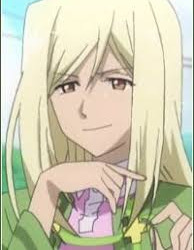
52. Miyo Takano (When They Cry: Higurashi)

53. Wiseman/Death Phantom (Sailor Moon R)
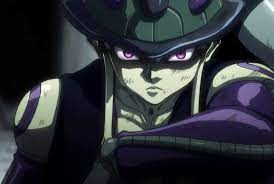
54. Meruem (Hunter x Hunter)

55. Lucemon (Digimon Frontier)
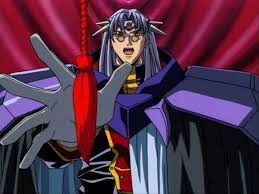
56. Lord Ilpalazzo (Excel Saga)
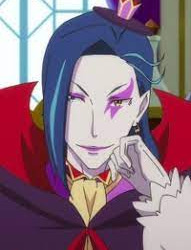
57. Roswaal L. Mather (Re:Zero)

58. Suigintou (Rozen Maiden)

59. Nui Harime & Ragyo Kiryuin (Kill La Kill)
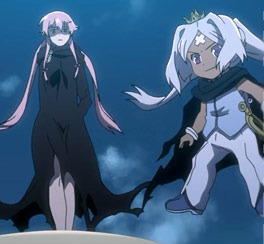
60. Yuno Gasai & Murmur #1 (The Future Diary)

61. Masquerade (Bakugan Battle Brawlers)

62. Creed Diskenth (Black Cat)

63. Izaya Orihara (Durarara)

64. Ladd Russo (Baccano)
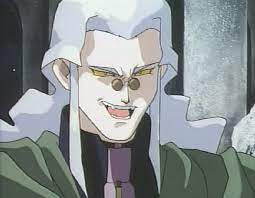
65. Kagato (Tenchi Muyo)

66. Satou Matsuzaka (Happy Sugar Life)

67. Lucy (Elfen Lied)

68. Kirei Kotomine (Fate series)

69. Naraku (Inuyasha)

70. Medusa Gorgon (Soul Eater)

71. Yuri “Yurippe” Nakamura (Angel Beats!)

72. Atsumu “Yukiatsu” Matsuyuki (Anohana)

73. Fumito Nanahara (Blood -C)

74. Dilandau Albatou (Vision of Escaflowne)

75. Edmond Dantes & Gankutsuou (Gankutsuou)
8 notes
·
View notes
Note
Since you are in....some trying times and since it's valentines day thought it would make you feel better if I sent you some obligatory chocolates from the Fate Verse.
You have your choice of...
King Arthur's (default) Crown. Fit for the Ruler of Britannia

A white cake made by Atilla the Hun, filled with love and strawberries.

A chocolate mug filled with bourbon Jelly, made by our own Sie Francis Drake.
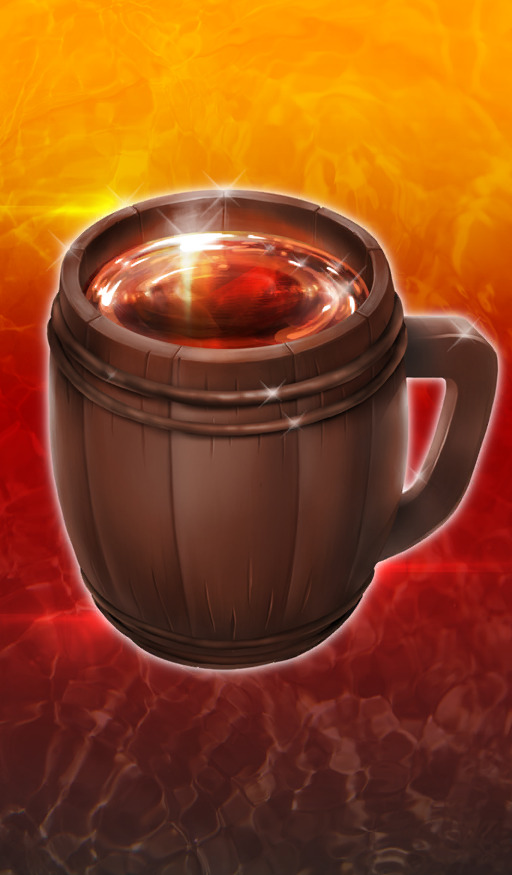
A....uh...1-to-1 scale chocolate replica of Emperor Nero Claudius

And...an....anatomically correct heart from Jack the Ripper

[I assure you it's not someone's heart dipped in chocolate]
And if chocolate is not your preference we have other gifts such as
A scapegoat plushie. Knitted together and stuffed by Dracula. Yes. That count Dracula. Surprisingly good at absorbing curses
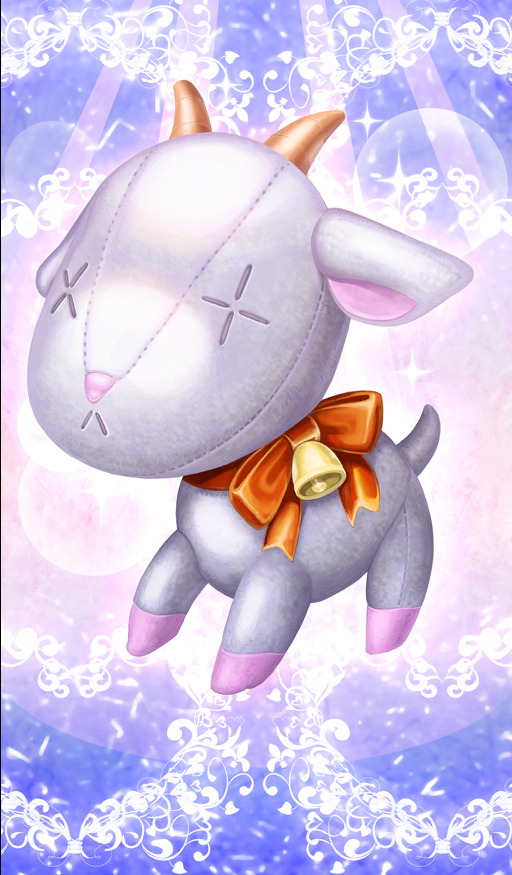
A 1-to-1 scale replica of Astolfo's hippogriff. [Also knitted and stuffed by Dracula]
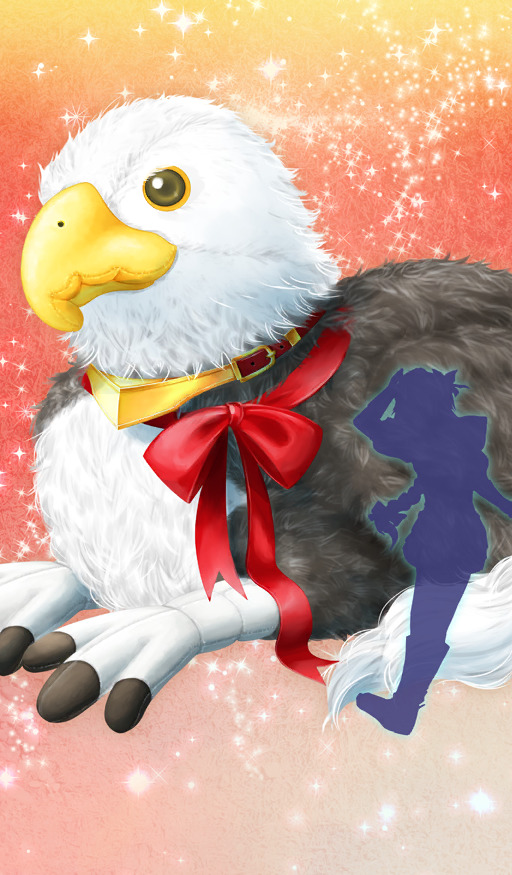
A Persian War-elephant from Darius III's personal army.
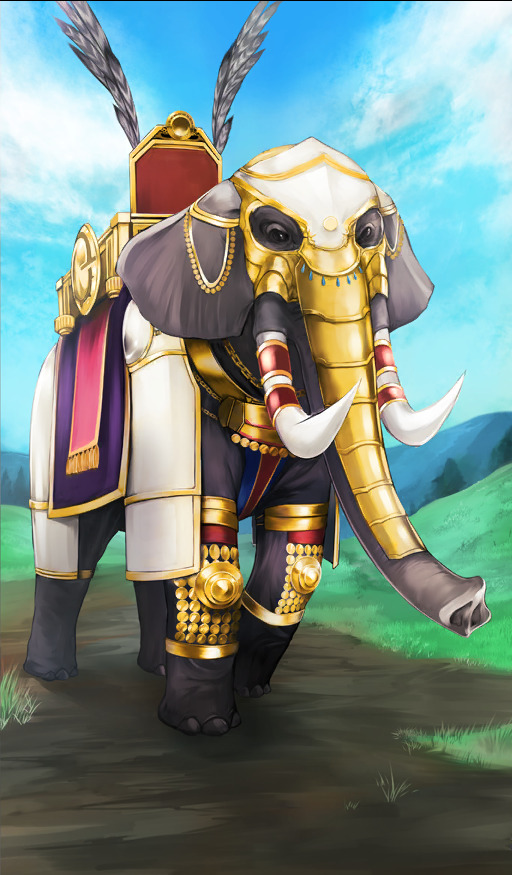
A collection of photos taken by my space son, Voyager.

And lastly, from the Founder of Rome itself, Romulus, I present a deed which gives you ownership of the
ENTIRE.
CITY.
OF.
ROME.
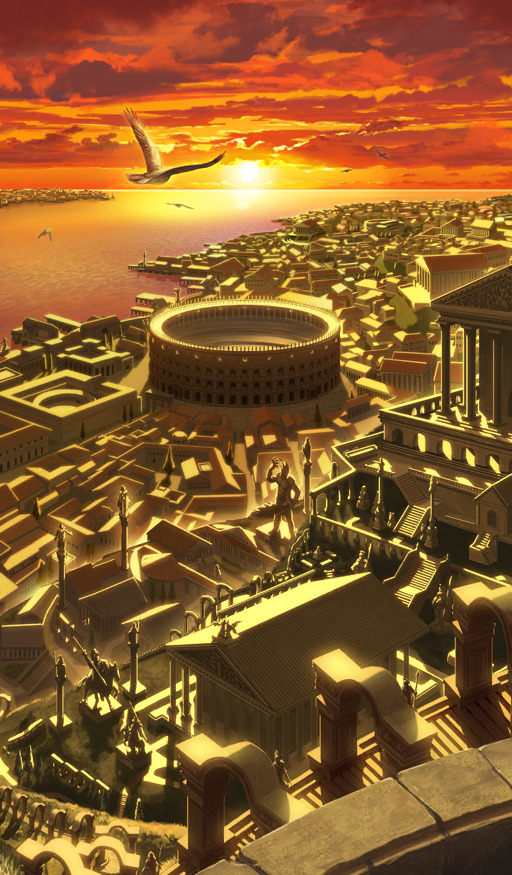
Wait shit I forgot today was valentine's day crap fuck fuck fuck-
16 notes
·
View notes